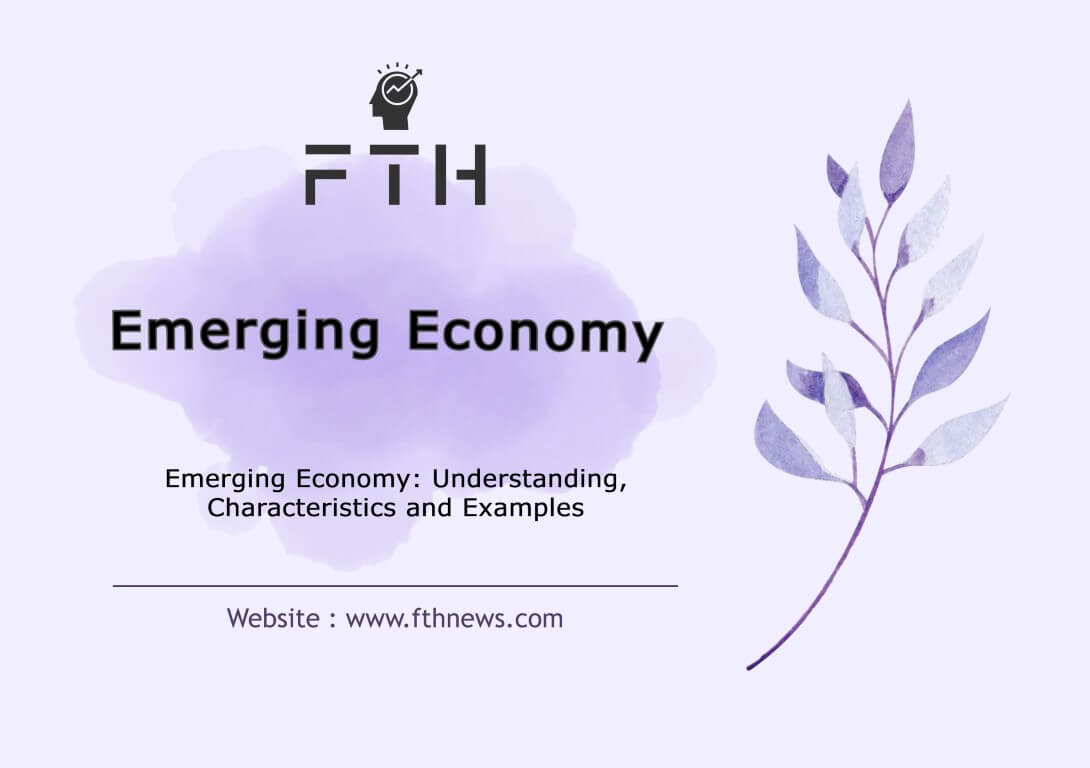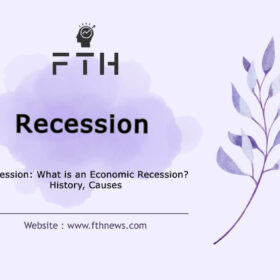
Emerging Economy: What Is It, How It Works, and Real-World Examples
Emerging Economy, often referred to as emerging market economies (EMEs), encompass the financial systems of countries that are in the process of development and transition towards a free-market or mixed-market economic structure.
In most cases, emerging markets strategically invest in activities that aim to boost their production capacity.
Their overarching objective is to shift from a traditional economy with a strong focus on agricultural exports and raw materials to a production-oriented economy.
Emerging markets aspire to achieve rapid industrialization and provide a platform for an improved quality of life for their citizens.
When experts classify a country as an emerging market, it signifies positive economic development within that nation. These markets represent a promising arena for investors due to their potential for growth and transformation, offering opportunities for economic advancement and progress.
Emerging Economy: Defining and Functioning
An emerging market economy represents the economic landscape of a developing nation as it gradually integrates with the global market while experiencing growth.
These economies exhibit some, but not all, characteristics of a developed market.
Developed markets often feature robust economic growth, high per capita income, well-developed equity and debt markets, foreign investor accessibility, and dependable regulatory systems.
As an emerging market economy evolves, it undergoes greater integration with the global economy.
This results in increased liquidity in local debt and equity markets, amplified trade volume, and greater foreign direct investment. Additionally, it fosters the development of modern financial and regulatory institutions. Notable examples of emerging market economies include India, Mexico, Russia, Pakistan, Saudi Arabia, China, and Brazil.
Crucially, an emerging market economy is in the process of transitioning from a low-income, less developed, often pre-industrial economy towards a modern, industrial economy, characterized by a higher standard of living.
tips:
Emerging market economies are transitioning towards becoming developed economies.
They typically have unified currency, stock market, and banking systems, and they’re in the process of industrialization.
Emerging markets can offer higher returns to investors due to their rapid growth, but they also come with inherent risks.
Understanding Emerging Economy
Investors are drawn to emerging markets for the potential of high returns, as these markets frequently experience faster economic growth measured by gross domestic product (GDP). However, this potential for higher returns often entails increased risks.
These risks can encompass political instability, domestic infrastructure challenges, currency volatility, and illiquid equity, as many major companies may still be state-run or privately owned. Local stock exchanges may also lack the liquidity required for outside investors.
Emerging markets usually lack the well-developed market and regulatory institutions found in developed nations. Market efficiency and strict standards in accounting and securities regulation may not be on par with advanced economies like the United States, Europe, and Japan.
Key Characteristics of Emerging Economy
Emerging Economy markets possess distinct features that set them apart from developed economies. Understanding these characteristics is essential for investors and policymakers. Here are eight key attributes that define emerging markets:
Rapid Economic Growth:
Emerging markets are known for their robust economic growth. Typically, a country is considered an emerging market when its real gross domestic product (GDP) demonstrates consistent growth of at least 3% or more. Despite this growth, they do not yet meet the criteria of developed countries.
High Volatility:
Emerging markets often face high volatility, which can stem from factors like natural disasters or domestic political instability. Traditional economies heavily reliant on agriculture may be vulnerable to such events. However, emerging markets are actively working to develop resilient economic systems that can withstand such challenges. High volatility can also result from significant economic risks or external price shocks, which can bring about substantial changes in a country’s economy. For example, a nation dependent on energy exports may experience an economic crisis due to a dramatic drop in global energy prices.
Lower Per Capita Income:
A distinguishing characteristic of emerging markets is their lower per capita income (PCI). Per capita income is calculated by dividing a country’s national income by its population, providing insight into the quality and standard of living of its residents. Emerging markets typically exhibit low to middle per capita incomes in comparison to developed countries, indicating lower household incomes.
Currency Fluctuations:
Currency and commodity fluctuations are common in emerging markets. These fluctuations occur when global currencies and commodities, such as food or oil, experience significant increases or decreases in value. For instance, subsidies for corn ethanol production in the United States in 2008 led to increased food and oil prices in certain emerging markets.
Regulatory Framework:
Emerging markets often require a regulatory body to oversee and manage financial markets fairly. Governments and organizations establish these regulatory bodies to ensure proper functioning and enforcement of market regulations. For example, China has its currency, the Chinese yuan, and operates a regulatory body known as the China Regulatory Commission.
Transitional Nature:
Emerging markets are in the process of transitioning from closed economies to open ones. They aim to boost economic activity, strengthen international trade, and shift focus from agriculture to manufacturing. As part of this transition, they may reduce protective tariffs, encouraging competition in the global market and diversifying their exports and imports. Emerging markets also tend to ease restrictions on business establishment and operation within their borders.
Growth Potential:
Most emerging markets implement policies that promote rapid economic growth and industrialization. These policies often lead to increased disposable income per capita, reduced unemployment, and improved infrastructure. Countries that embraced industrialization early are often referred to as developed nations.
Young Population:
A significant portion of the population in emerging markets comprises young individuals. This demographic trend offers a substantial workforce, boosting the ability to produce goods and provide services. Nations anticipating a rise in their working-age population over the next two decades are poised to increase their labor force.
Signs of Progress
However, emerging markets generally possess a physical financial infrastructure that includes banks, stock exchanges, and unified currencies. One hallmark of emerging market economies is their propensity to adopt reforms and institutions akin to those in modern developed countries, which promotes economic growth.
These economies often shift their focus from agricultural and resource extraction activities towards industrial and manufacturing activities. Governments in emerging markets typically pursue strategic industrial and trade policies to stimulate economic growth and industrialization.
These strategies include export-led growth and import-substituting industrialization. The former is more typical in emerging economies as it encourages increased engagement and trade with the global economy.
Emerging market countries also frequently implement domestic initiatives such as investments in educational systems, infrastructure development, and legal reforms aimed at securing investors’ property rights.
It’s important to note that frontier markets, while offering attractive investment opportunities, are generally smaller than emerging markets. They feature lower per capita income, reduced market liquidity, and less industrialization, making them riskier for investors.
How Emerging Market Economies Are Classified
Emerging market economies are categorized differently by various observers. Income levels, financial system quality, and growth rates are commonly used criteria, but the exact list of emerging market economies can vary.
For instance, the International Monetary Fund (IMF) classifies 20 countries as emerging markets, while Morgan Stanley Capital International (MSCI) classifies 24 countries as such. Standard and Poor’s (S&P), FTSE Russell, and Dow Jones also differ slightly in their classification of countries as emerging markets.
At the discretion of these institutions, a country can be removed from the list by either upgrading it to developed nation status or downgrading it to a frontier nation. Developed nations can also be downgraded to emerging markets, and frontier markets may be upgraded to emerging markets.
What Defines an Emerging Market Economy?
An emerging market economy is generally considered an economy in transition towards becoming a developed market economy. It exhibits rapid GDP growth, increasing per capita income, greater liquidity in debt and equity markets, and a well-established financial system infrastructure.
Countries Classified as Emerging Markets
Classifications vary, but the BRICS countries—Brazil, Russia, India, China, and South Africa—represent five emerging markets with substantial economic growth and investment opportunities. The GDP of these countries has steadily increased from 2000 to the present day, and this trend is expected to continue.
Thailand and Indonesia have also emerged as significant players in the emerging market scene.
Advantages of Investing in Emerging Economies
Investors are attracted to emerging economies because of their high growth. Since emerging economies are experiencing major changes in economic activity, they can grow at a rapid pace. This feature provides an opportunity for investors to enter the market.
In addition to the high growth opportunity, emerging economies have different risks for investors. Investing in these economies leads to new investment opportunities that may not be closely related to domestic markets. The economy of an emerging economy may experience sudden fluctuations. Emerging economies contribute to global economic growth and are of particular importance to foreign investors. Some of the advantages of these economies for investors are:
Branding in an Area with Little or No Competition:
Emerging economies often present an opportunity for companies to establish their brand and market presence with limited competition. This can be advantageous for businesses looking to create a strong foothold in a region where established players are few, allowing for market dominance.
Acquiring Credit to Expand to Emerging Economies:
Access to financing is crucial for expansion into emerging economies. Investors may find it easier to secure credit and funding to support their entry into these economies, often with support from local financial institutions and government incentives.
Providing Goods That Are Not Currently Available:
Emerging economies may have unmet consumer needs or under served segments of the population. Investing in these economies allows companies to offer products or services that are not currently available, creating new demand and revenue streams.
Earning Higher Profits and Profitable Potential:
The high-growth nature of emerging economies can lead to substantial profit opportunities. As these economies continue to develop and mature, companies can achieve robust revenue growth and profitability, outperforming their counterparts in more saturated, developed markets.
Diversification of Investment Portfolio:
Emerging economies provide investors with an opportunity to diversify their investment portfolios. Diversification across different geographies can help reduce overall investment risk, as the performance of emerging economies is often less correlated with that of developed markets.
Access to New Investment Opportunities:
Investing in emerging economies offers access to new and unique investment opportunities that may not be closely related to domestic markets. These opportunities can include industries and sectors that are in high demand within the specific emerging economy.
Contributing to Global Economic Growth:
Emerging economies play a vital role in global economic growth. By investing in these economies, investors can support and benefit from the economic development of these nations, while also contributing to the broader global economy.
Attractive Demographics:
Emerging economies frequently have young, growing populations, which can lead to increased consumer spending and a larger workforce. This demographic advantage can enhance the market potential for various industries, from consumer goods to technology.
While investing in emerging economies presents compelling advantages, it’s essential to be aware of the associated risks, such as political instability, currency fluctuations, and regulatory changes. Conducting thorough research and due diligence is key to navigating these economies successfully and capitalizing on the growth opportunities they offer.
In summary, investing in emerging economies can be a strategic move for investors looking to diversify their portfolios, achieve high growth, and explore unique business prospects while contributing to global economic development.
Which countries are emerging economy?
The classification of countries as emerging markets or emerging economies can vary depending on the criteria and definitions used by different organizations and experts. However, here is a list of countries that are often considered emerging markets or emerging economies by many sources:
BRICS Nations:
These countries are frequently included in the list of emerging markets:
- Brazil
- Russia
- India
- China
- South Africa
Emerging Economies in Asia:
- Indonesia
- Thailand
- Malaysia
- Philippines
- Vietnam
- Bangladesh
- Pakistan
Emerging Economies in Latin America:
- Mexico
- Argentina
- Chile
- Colombia
- Peru
Emerging Economies in the Middle East and North Africa :
- Saudi Arabia
- Egypt
- Turkey
Emerging Economies in Eastern Europe:
- Poland
- Hungary
- Czech Republic
Emerging Economies in Africa:
- Nigeria
- Kenya
- South Africa (part of BRICS)
- Ghana
Emerging Economies in Eastern Asia:
- South Korea
- Taiwan
Emerging Economies in the Caribbean:
- Dominican Republic
- Jamaica
Please note that this is not an exhaustive list, and the classification of emerging markets or economies may change over time as these countries continue to develop and evolve. Different organizations and experts may have slightly different lists based on their specific criteria and methodologies for classification.
Disadvantages of Investing in Emerging Economies
Investing in emerging markets can offer significant opportunities, but it also comes with a set of disadvantages and risks. Here are some of the common disadvantages of investing in emerging markets:
Higher Risk:
Emerging markets are generally riskier than developed markets. They often face greater political, economic, and social instability, which can lead to significant investment risks.
Political Instability:
Emerging markets can be prone to political instability, including changes in government, policy shifts, and regulatory uncertainty. Political upheavals can have a direct impact on investments.
Economic Volatility:
Economic conditions in emerging markets can be highly volatile, with frequent fluctuations in currency values, inflation rates, and interest rates. These factors can affect the returns on investments.
Lack of Transparency:
Emerging markets often lack the level of transparency and reliable information that is commonly available in developed markets. This makes it more challenging for investors to make informed decisions.
Currency Risk:
Currency exchange rate fluctuations can pose a substantial risk in emerging markets. Investments may be subject to significant losses due to currency devaluation or depreciation.
Limited Market Liquidity:
Many emerging markets have less liquid financial markets compared to developed markets. This can result in difficulties buying or selling assets at desired prices.
Legal and Regulatory Challenges:
Legal systems and regulatory environments in emerging markets may be less developed or less predictable than in developed economies. Changes in laws or regulations can impact investments.
Infrastructure and Operational Challenges:
Emerging markets may lack adequate infrastructure, which can lead to operational challenges for businesses. Transportation, communication, and logistics issues can hinder investment returns.
Cultural and Language Barriers:
Doing business in emerging markets may involve overcoming cultural and language barriers, which can add complexity to investments.
Corruption and Bureaucracy:
Corruption and bureaucracy can be prevalent in some emerging markets, leading to inefficiencies and potentially compromising investments.
Geopolitical Risks:
Emerging markets can be exposed to geopolitical risks, including conflicts, trade disputes, and international tensions, which can impact investment stability.
Market Timing Challenges:
Timing investments in emerging markets can be challenging due to the potential for sudden economic and political changes. Investors may need to adopt a longer-term perspective.
Lack of Investor Protection:
Emerging markets may offer limited investor protection, making it harder to safeguard investments in case of disputes or market disruptions.
Despite these disadvantages, many investors are attracted to emerging markets due to the potential for high returns and diversification benefits. However, it’s crucial to conduct thorough research and risk assessment before investing in these markets and to consider them as part of a diversified investment portfolio.














